Michael Kazin on Dorothea Lange and the Great Depression
Two new books explore the cultural achievements of the 1930s that continue to shape the American imagination.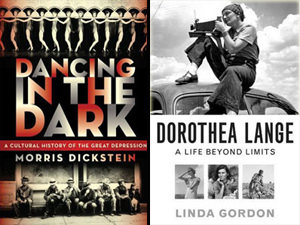
Framed by two shy or sleepy children, the homeless woman appears to be reflecting on her suffering. Her clothes are cheap and dingy, but the hand resting gracefully on her cheek suggests that poverty can ennoble, even strengthen one who bears no responsibility for her plight. When Dorothea Lange took the 1936 photo, soon dubbed Migrant Mother,” she was in a hurry to get home to Berkeley. It was a cold and rainy February day in rural Southern California, and she was exhausted after spending a month on the road. Lange did not even ask the poor woman from Oklahoma her name—which was Florence Thompson.
But her masterly photo remains one of the handful of cultural icons from the 1930s that continue to shape the way Americans of all ages remember the Great Depression. Like the song “Brother, Can You Spare a Dime?,” the novel “The Grapes of Wrath” and FDR’s fireside chats, “Migrant Mother” documents the dialectic between a society’s troubles and the determination of its citizens to fight back. We understand that Thompson is an anxious victim, yet she repels our pity. With some help from the New Deal, she and her kids will get over this.
Ironically, the photographer of the impoverished, youthful matriarch spent long periods away from her own growing children. To have the freedom to travel around the country taking photos for the Farm Security Administration (FSA), a new federal agency that also employed photographers Walker Evans and Ben Shahn, Lange had temporarily placed her six offspring in foster homes. As Linda Gordon writes in “Dorothea Lange: A Life Beyond Limits,” “She was exquisitely sensitive to embodied emotion, but she also probably felt the complexity of Thompson’s anxiety because it was hers, as well. Nothing in Lange’s personal life was as fraught as her own motherhood and she lived with contradictory impulses every day.”
Dancing in the Dark: A Cultural History of the Great Depression
By Morris Dickstein
W.W. Norton & Co., 624 pages
Dorothea Lange: A Life Beyond Limits
By Linda Gordon
W.W. Norton & Co., 560 pages
Among its many virtues, this biography demonstrates the value of feminist history. For more than three decades, Gordon has been writing fine narratives about such subjects as birth control, welfare policy, family violence and interracial adoption. Her deep knowledge of how the personal becomes historical enables her to understand how a gifted artist managed to produce such memorable, altruistic images—while struggling to navigate her way through marriages to two gifted, ambitious men (the painter Maynard Dixon and the labor economist Paul Taylor) and to control her guilt about often leaving her children for other people to raise.
Lange, born in 1895, did not set out to be a documentarian of the dispossessed. During the 1920s, she earned a comfortable income as a portrait photographer, depicting wealthy residents of the Far West and a smattering of fellow bohemians. Only gradually, as her more lucrative commissions declined, did she train her camera on bread lines, fields and migrant camps. Her marriage to Taylor—a tireless advocate for farmworkers—and her job with the FSA both began in 1935, which also happened to be the year the New Deal turned left and most American leftists signed on to the Popular Front, which encouraged radicals to become boosters of President Franklin D. Roosevelt, while nudging the Democrats to take more forthright stands against racists, fascists and anti-union businessmen.
Gordon describes how Lange developed a unique style that conferred dignity on her subjects even as it exposed their arduous jobs and miserable homes and surroundings. She took special care to photograph American farmworkers who were black, Latino or Asian. In the South, Lange made images of poorly dressed, handsome black men and women standing in front of shacks and juke joints, “typically contemplative or conversational.” The administration had warned FSA photographers to avoid taking any shots critical of Jim Crow; the white South was vital to keeping Roosevelt’s party in power. But, writes Gordon, the relaxed sensuality of the photos still managed to “convey an anti-racist message.”
In the months just after the attack on Pearl Harbor, Lange brought the same commitment to the pictures she took of Japanese-Americans in California. She was working at the time for the Army, which was shipping her subjects, most of whom were U.S. citizens, off to Spartan camps far from their homes in coastal cities. By documenting the everyday lives of these people before and after their “relocation,” she again drew attention to the degradation and pride of individuals who didn’t fit the racist myths that had, in part, allowed the government to rip their world apart. The Army, recognizing the critical nature of Lange’s images, impounded them during World War II and then stored them away in the National Archives.
When she snapped what became her most famous photograph, Lange didn’t realize that it too revealed the falsity of racial stereotypes. Along with the millions of people who have glimpsed a reproduction of “Migrant Mother,” Lange assumed that Frances Thompson, like most Okies, was a white woman whose ancestors probably came from somewhere in the British Isles. But Thompson was actually a full-blooded Cherokee; she had been born in a tepee and grew up on a reservation.
Linda Gordon is the biographer Lange deserves. She portrays her as both political heroine and self-centered artist, while carefully explaining how Lange’s difficult personal story—including ailments that made it painful for her to move around during the last 20 years of her life—colored her accomplishments, for good and ill. Gordon also pinpoints the vital part Lange played in New Deal culture, without slighting how her husbands, co-workers, bosses, subjects and the press helped shape her work. And the historian’s prose is both straightforward and evocative, an echo of Lange’s own elegant realism. This is, in sum, a work of dazzling intelligence and quiet beauty. Morris Dickstein devotes large chunks of his rambling survey of 1930s culture, “Dancing in the Dark: A Cultural History of the Great Depression,” to the same wave of social realism to which Lange belonged. But the distinguished critic gives barely a mention to documentary photography. His attention is fixed primarily on the “proletarian” novelists and playwrights whose ideologically driven creations were controversial in their own time and whose artistic merits untold numbers of English professors have been debating ever since.
Dickstein discovers nuggets of literary imagination shining in the dustbin of radical dogma. He argues that Mike Gold’s 1931 autobiographical novel, “Jews Without Money,” had much in common with Allen Ginsberg’s “impassioned, surreal language” in such 1950s classics as “Howl” and “America.” Ginsberg, the ecstatic gay Buddhist, was like Gold, who became the hanging judge of Stalinist letters, “a Jewish visionary touched by messianic hopes, a reader of Whitman and Blake mesmerized by the American junkyard and its outcast inhabitants.”
In another unconventional move, Dickstein rescues Erskine Caldwell’s novels about white sharecroppers—the most famous being “Tobacco Road”—from the enormous condescension of critics who accused the writer of exaggerating the incestuous, amoral behavior of his characters. Despite bad reviews, Caldwell’s novels were best-sellers in the 1930s; an adaptation of “Tobacco Road” played for over seven years on Broadway. Americans, contends Dickstein, were getting more than they realized from the author, who was then close to the Communist Party. While most of Caldwell’s readers thought they were merely enjoying a “wild, grotesque, lubricious comedy,” they were also learning about the harshness of rural life that the Depression had only exacerbated. Caldwell “turns cruelty and inhumanity from a joke into a bitter joke indeed.” Dickstein makes equally telling points about Richard Wright and Nathanael West (the pen name of Nathan Weinstein), writers who also emerged from the Communist milieu to produce works that unflinchingly explored some of the more gruesome aspects of American society.
Dancing in the Dark: A Cultural History of the Great Depression
By Morris Dickstein
W.W. Norton & Co., 624 pages
Dorothea Lange: A Life Beyond Limits
By Linda Gordon
W.W. Norton & Co., 560 pages
Then, rather abruptly, Dickstein turns to Hollywood. He dwells on predictable figures and their movies—Busby Berkeley’s hyper-disciplined choreography, Astaire and Rogers as dancing sweethearts, Grant and Hepburn as rich folks with nothing to do but crack jokes and look marvelous. To his credit, Dickstein understands how the “lightheartedness and frivolity” of this popular fare, often labeled “escapist,” obscured an ironic subtext. The routine “We’re in the Money,” from Berkeley’s “Gold Diggers of 1933,” included showgirls losing their jobs and a sheriff closing down a bankrupt show. “Escapist illusions,” observes Dickstein, “are what this number is about—pretending you’re in the money when there isn’t any.”
Unfortunately, the thematic imagination of “Dancing in the Dark” goes no deeper than that. It is a pleasure to follow Dickstein as he displays his vast knowledge of the fiction and film of the Depression years. His book is studded with little insights, conveyed in fluid prose unmarred by the “theoretical” jargon that too many scholars of literature confuse with original ideas. But Dickstein offers no overarching way to understand how the two kinds of 1930s culture—hard-luck realism and jazzy romantic comedies—worked together. Only rarely does he seem interested in what the consumers of all these products may have been thinking as they read or watched them. In place of larger meanings, Dickstein often descends to banalities, such as stating that the energy of screwball comedies and dance films “made those difficult years more palatable, and left us with many works that testify to the unquenchably vital spirit of those who lived through them.”
After reading Gordon and Dickstein’s books, it is hard to avoid a pang of nostalgia. Both authors eloquently remind us that thousands of American artists in the 1930s were able to express a spirited left populism without sacrificing the dignity and autonomy of their craft. Much of their work endures because of its artistic brilliance, not merely because they empathized so strongly with people who fully merited that sentiment.
But where are today’s Richard Wrights and Dorothea Langes? The left does have powerful cynics like Noam Chomsky and Naomi Klein, who flail the system with the bitterness of a Mike Gold but have no credible alternatives to offer. And it has Michael Moore, whose talent for radical satire loses force with each repetition.
But one seeks in vain for artists—whether they work in print or pixels—who effectively convey the ideals of social equality and democracy that are essential to reviving any mass movement on the left that would be worthy of the name. One of the best things in Dickstein’s book is his appreciation of the films Frank Capra made in the late 1930s and early 1940s, which too many liberals and radicals now dismiss as sentimental fables. The critic is particularly fond of “Meet John Doe,” the dark allegory of an attempted fascist takeover of the United States, made in 1941. “Without abandoning his belief in the common people,” writes Dickstein, “Capra … not only satirizes them (and himself) but shows how fickle and vulnerable they can be, how easily an unprincipled plutocrat with dictatorial ambitions can manipulate them.”
Yet the film, written by the passionate New Dealer Robert Riskin, concludes with one of the purest expressions of populist defiance ever seen on screen. “Ordinary Americans”—members of the John Doe Clubs who have wised up to the plutocrat’s scheme—convince their hero, played by Gary Cooper, not to commit suicide. Then, their unofficial spokesman, a hard-bitten newspaper reporter, turns to the would-be Mussolini—a wealthy newspaper publisher named D.B. Norton—and declares: “There you are, Norton! The people! Try and lick that!” It is not an easy task to balance the gullibility of “the people” with their capacity to help themselves. But in the grip of our own economic debacle, it remains a very good idea.
|
Michael Kazin’s last book is “A Godly Hero: The Life of William Jennings Bryan.” He teaches history at Georgetown University and is co-editor of Dissent magazine. |
Independent journalism is under threat and overshadowed by heavily funded mainstream media.
You can help level the playing field. Become a member.
Your tax-deductible contribution keeps us digging beneath the headlines to give you thought-provoking, investigative reporting and analysis that unearths what's really happening- without compromise.
Give today to support our courageous, independent journalists.


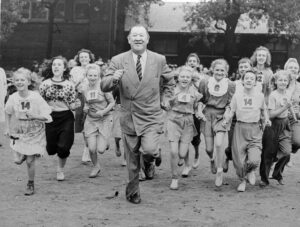

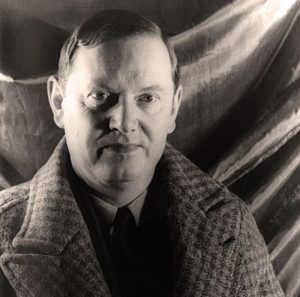
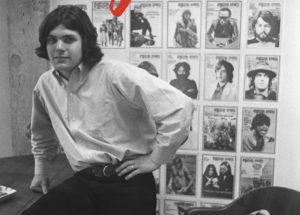
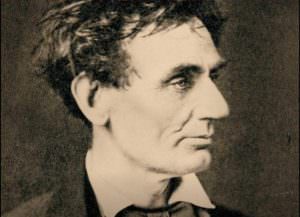
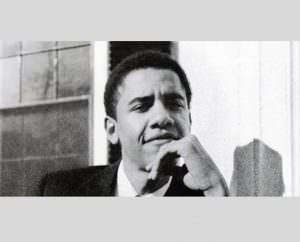
You need to be a supporter to comment.
There are currently no responses to this article.
Be the first to respond.